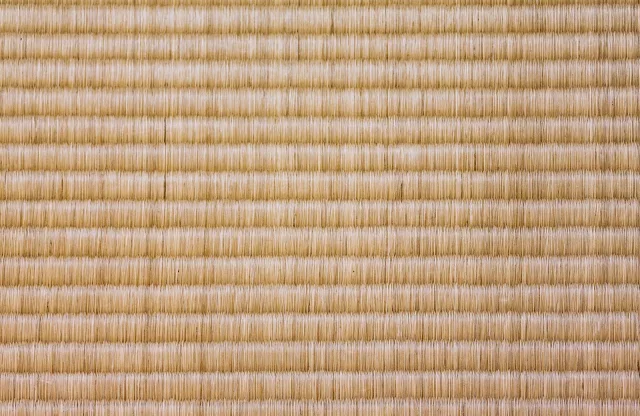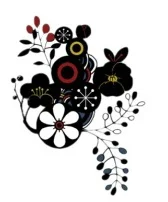
In the land of the rising sun, a time-honored tradition has stood the test of centuries - the art of tatami.
This unique and versatile flooring material has adorned Japanese homes for generations, offering not only a functional surface but also a symbol of cultural heritage.
This article will delve into the fascinating world of tatami, exploring its history, structure, dimensions, and various types.
Join us on a journey through time and discover the allure of tatami.
{tocify} $title={Table of Contents}
A Brief History of Tatami
Tatami's roots can be traced back to ancient times when it was known as "mushiro," "goza," or "komo" - thin mats used as cushions on wooden floors.
It wasn't until the Heian period that tatami, as we know it today, started to take shape.
With increased thickness and standardized dimensions, tatami became a permanent fixture in Japanese homes.
The influential role of tatami in Japanese culture became further evident during the Muromachi period, particularly in the emergence of the shoin-zukuri architectural style.
As tatami usage expanded, its thickness and weight increased, making it an essential component of tea ceremonies and traditional seating arrangements.
During the Edo period, tatami gained even more significance and was considered a vital element of architectural design.
The establishment of the position of "tatami-bugyo," a government official responsible for overseeing the production and quality of tatami, highlighted its importance.
The attention to detail and craftsmanship dedicated to tatami during this era further cemented its position as a symbol of status and sophistication.
The Structure of Tatami
Tatami, a traditional Japanese flooring system, consists of three main components:
Tatami Flooring
The foundation of tatami lies in its flooring, known as "tatami-doko."
Traditionally, tatami-doko consisted of compressed and sewn rice straw, resulting in a thickness of approximately 5cm.
However, due to practicality and accessibility concerns, modern tatami often incorporates alternative materials such as wood chips, insulation boards, or foam.
While these materials may not match rice straw's natural resilience and air purification properties, they offer advantages such as lightweight construction and superior sound insulation.
Tatami Surface
The surface of tatami, referred to as "tatami-omote," is where its true artistic beauty shines.
Woven from dried igusa (Juncus effusus) or shichito (cyperus malaccensis), tatami-omote comes in various weaving styles.
The most common design is the morome-omote, where two warp threads are woven into a single weft thread, creating a visually pleasing pattern.
For edgeless tatami, a different weaving technique called meseki-omote is employed, with one warp thread per weft thread.
Over time, tatami-omote may fade or sustain damage, leading to the practice of flipping or replacing the surface periodically.
Tatami Border
To complete the aesthetic appeal and secure the tatami-omote in place, a fabric border known as "tatami-beri" is stitched along the edges.
The choice of tatami-beri can significantly impact the ambiance of a room, with a wide array of colors and patterns available.
In the past, the selection of tatami-beri was subject to strict regulations based on social status.
For instance, the imperial family and high-ranking officials were entitled to ungen-beri, while princes, regents, and ministers enjoyed korai-beri or komon-korai-beri.
The Dimensions of Tatami
Tatami comes in different sizes, each with its own purpose and name.
The standard measurement for tatami is based on the concept of "ken," a traditional unit of length equal to approximately 1.818 meters.
The most common size is the "ichijo," which measures 3 ken by 6 ken, equivalent to 1.62 square meters.
However, customization is prevalent in tatami production, allowing for tailored sizes to fit specific room dimensions.
Let's explore some of the popular tatami sizes:
- Shakuma, Honma: This size measures 6 shaku 3 sun (equivalent to 1.91 meters) in one ken, yielding a tatami size of 3 shaku 2 sun 5 bu by 6 shaku 3 sun. It is commonly found in the southern part of Osaka.
- Kyoma, Honma, Kansai-ma: With a size of 6 shaku 3 sun (equivalent to 1.91 meters) in one ken, this tatami measures 3 shaku 1 sun 5 bu by 6 shaku 3 sun. It is widely used in the Kansai region, including Kinki, Chugoku, Shikoku, and portions of Kyushu.
- Chukyoma, Saburokuma: Measuring 6 shaku (equivalent to 1.82 meters) in one ken, this tatami has dimensions of 3 shaku by 6 shaku. It is primarily used in Aichi and Gifu prefectures, as well as parts of Tohoku and Hokuriku regions.
- Edoma, Kanto-ma, Inaka-ma, Goroku-ma: This size follows a 6 shaku pillar interval, resulting in a tatami size of approximately 2 shaku 9 sun by 5 shaku 8 sun (equivalent to 0.88 meters by 1.76 meters). It is widely utilized in the Kanto region, including Tokyo, Tohoku, and parts of Chubu, as well as Okinawa and Amami Islands.
- Danchi-ma, Koudan-size, Goroku-ma: These sizes vary, but the most common dimensions are 2 shaku 8 sun by 5 shaku 6 sun (equivalent to 0.85 meters by 1.70 meters). They are prevalent in public housing, apartments, and condominiums.
The Art of Tatami Placement
The arrangement of tatami mats plays a crucial role in Japanese interior design, reflecting both aesthetic considerations and cultural significance.
Two common methods of tatami placement are the "shukugi-jiiki" and "fushukugi-jiki."
Shukugi-jiki: The Celebration Layout
In the shukugi-shiki layout, tatami mats are placed in a manner that prevents the corners of four mats from meeting at a single point.
This arrangement creates a harmonious flow throughout the room, avoiding any negative energy associated with convergence.
The shukugi-shiki layout is the standard configuration seen in most modern Japanese homes, promoting balance and tranquility.
Fushukugi-jiki: The Mourning Layout
During somber occasions such as funerals, a different tatami placement method called fushukugi-jiki is employed.
Unlike the celebration layout, fushukugi-jiki allows the corners of four mats to align at a central point.
This intentional convergence serves as a visual representation of mourning and is believed to ward off evil spirits.
Fushukugi-jiki is typically reserved for funeral homes, temples, and other locations associated with mourning.
Types of Tatami
Tatami is not a one-size-fits-all flooring option.
Different types of tatami cater to specific needs and preferences. Let's explore some of the popular variations:
Washable Tatami
In response to modern living demands, washable tatami has emerged as a convenient option for households.
By incorporating waterproof materials or a layer of resin, washable tatami provides resistance against spills, stains, and moisture.
This type of tatami is particularly suitable for areas prone to high humidity or heavy foot traffic, ensuring longevity and ease of maintenance.
Allergen-Resistant Tatami
To address concerns related to dust mites and allergens, manufacturers have developed allergen-resistant tatami.
By utilizing hypoallergenic materials or incorporating specialized treatments, this type of tatami minimizes the risk of triggering allergies or respiratory issues.
Allergen-resistant tatami is an ideal choice for individuals with sensitivities or those seeking a cleaner and healthier living environment.
Eco-Friendly Tatami
Taking environmental consciousness into account, eco-friendly tatami utilizes sustainable materials and manufacturing processes.
Rice straw remains a popular choice for the core of eco-friendly tatami, as it is a renewable resource and biodegradable.
Additionally, natural dyes and low-VOC (volatile organic compound) finishes contribute to a healthier indoor environment.
By opting for eco-friendly tatami, homeowners can minimize their ecological footprint while enjoying the beauty of traditional Japanese flooring.
The Timeless Appeal of Tatami
Tatami's enduring popularity can be attributed to its unique blend of aesthetics, functionality, and cultural significance.
Beyond its practical benefits, tatami evokes a sense of tranquility and harmony, creating a serene ambiance within living spaces.
As a tangible link to Japan's rich history and traditions, tatami serves as a bridge between the past and the present, reminding us of the importance of preserving cultural heritage.
In a world driven by rapid change, tatami's timeless appeal provides a welcome respite, inviting us to slow down and appreciate the beauty of simplicity.
Whether used in traditional Japanese rooms or integrated into modern interiors, tatami continues to captivate and inspire, exemplifying the elegance and grace of Japanese design.
Conclusion
As we conclude our exploration of tatami, we hope to have shed light on the captivating world of this traditional Japanese flooring.
From its humble origins to its modern adaptations, tatami remains an integral part of Japanese culture and architectural design.
The allure of tatami lies not only in its functionality but also in its ability to transcend time, offering a connection to the past and a glimpse into the essence of Japanese aesthetics.
As you encounter the beauty of tatami in your own journey, may you embrace its serene presence and appreciate the cultural heritage it encompasses.

Your Gateway to Japan's Wonders! Immerse yourself in the beauty, culture, and adventures that Japan has to offer.
Check It Out!
Post a Comment